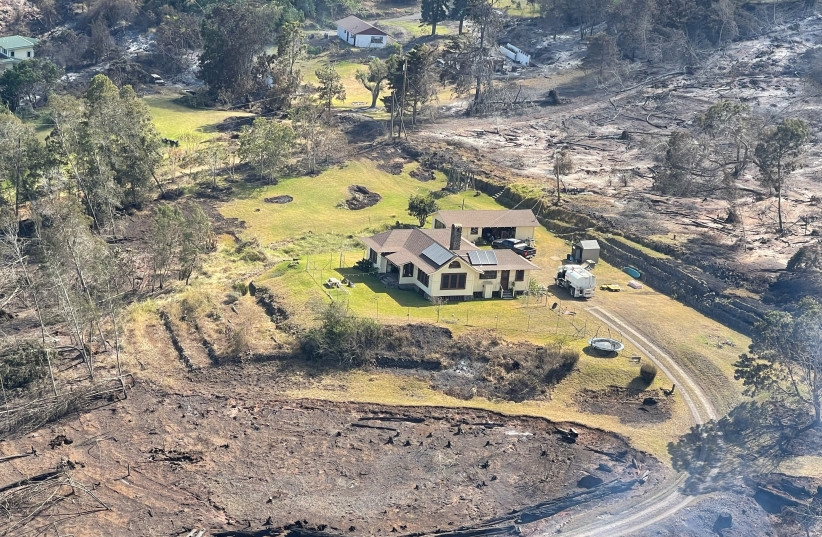Death toll from Maui fires hits at least 89, damages at billions of dollars
The scale of the Maui wildfires’ destruction came into sharper focus on Saturday, as officials warned the death toll would likely rise and search teams with cadaver dogs sifted through the charred ruins of Lahaina looking for more victims.
The death toll from the Maui wildfires is now at 89, officials said on Saturday, making it the deadliest US wildfire in more than a century.
The cost to rebuild the historic resort town was estimated at $5.5 billion, according to the Federal Emergency Management Agency (FEMA), after the fast-moving flames consumed more than 1,000 buildings and leveled almost the entire town.
Officials vowed to examine the state’s emergency notification systems after some residents questioned whether more could have been done to warn people before the fire overtook their homes. Some were forced to wade into the Pacific Ocean to escape.
Sirens stationed around the island – intended to warn of impending natural disasters – never sounded, and widespread power and cellular outages hampered other forms of alerts.
The state’s attorney general, Anne Lopez, said she was launching a review of the decision-making both before and during the fire, while Governor Josh Green told CNN he had authorized a review of the emergency response.
 A house stands surrounded by scorched vegetation after wildfires driven by high winds burned across Kula on the island of Maui, Hawaii, U.S. August 11, 2023. (credit: REUTERS)
A house stands surrounded by scorched vegetation after wildfires driven by high winds burned across Kula on the island of Maui, Hawaii, U.S. August 11, 2023. (credit: REUTERS)Local officials have described a nightmarish confluence of factors, including communications network failures, powerful wind gusts from an offshore hurricane and a separate wildfire dozens of miles away, that made it nearly impossible to coordinate in real time with the emergency management agencies that would typically issue warnings and evacuation orders.
The death toll made the inferno, which erupted on Tuesday, Hawaii’s worst natural disaster in history, surpassing a 1961 tsunami that killed 61 people a year after Hawaii became a US state.
Rapid advance
Authorities began allowing residents back into west Maui on Friday, though the fire zone in Lahaina remained barricaded. Officials warned there could be toxic fumes from smoldering areas and said search operations were continuing.
“It’s going to be sad to get down there,” said Za Dacruz, 33, as he waited on Friday in a traffic jam to try to return to Lahaina. “We’re just looking for everyone to be alive, to be safe – that’s all we’re trying to do. And the rest? We’ll go from there.”
Hundreds of people were still missing, though a precise count was not clear.
At a family assistance center in Kahului, June Lacuesta said he was trying to locate nine relatives who had not been heard from since Tuesday.
“When I see Lahaina town itself, I cannot describe the feelings I get,” said Lacuesta, who was headed to a church shelter next to continue his search.
The disaster began just after midnight on Tuesday when a brush fire was reported in the town of Kula, roughly 35 miles (56 km) from Lahaina.
About five hours later, power was knocked out in Lahaina. In updates posted on Facebook that morning, Maui County said a three-acre (1.2-hectare) brush fire cropped up in Lahaina around 6:30 a.m. but had been contained by 10 a.m.
Subsequent updates were focused on the Kula fire, which had burned hundreds of acres and forced some local evacuations. But at around 3:30 p.m., according to the county’s updates, the Lahaina fire flared up.
Some residents began evacuating while people, including hotel guests, on the town’s west side were instructed to shelter in place. In the ensuing hours, the county posted a series of evacuation orders on Facebook, though it was not clear whether residents were receiving them as people frantically fled the fast-advancing flames.
Some witnesses said they had little warning, describing their terror as the blaze destroyed the town around them in what seemed to be a matter of minutes.





Comments are closed.